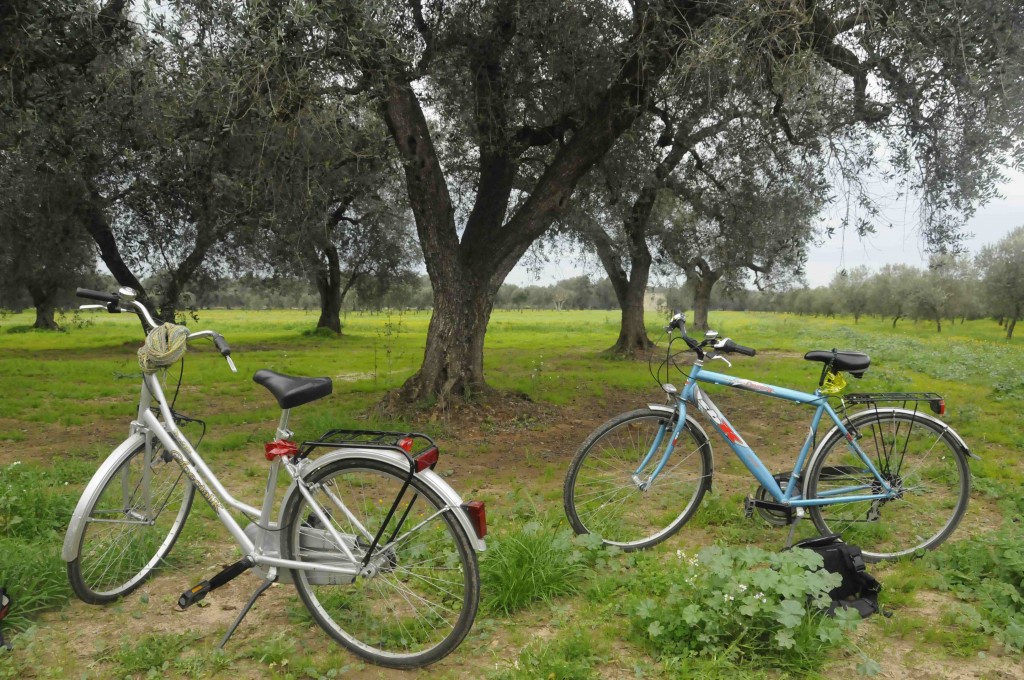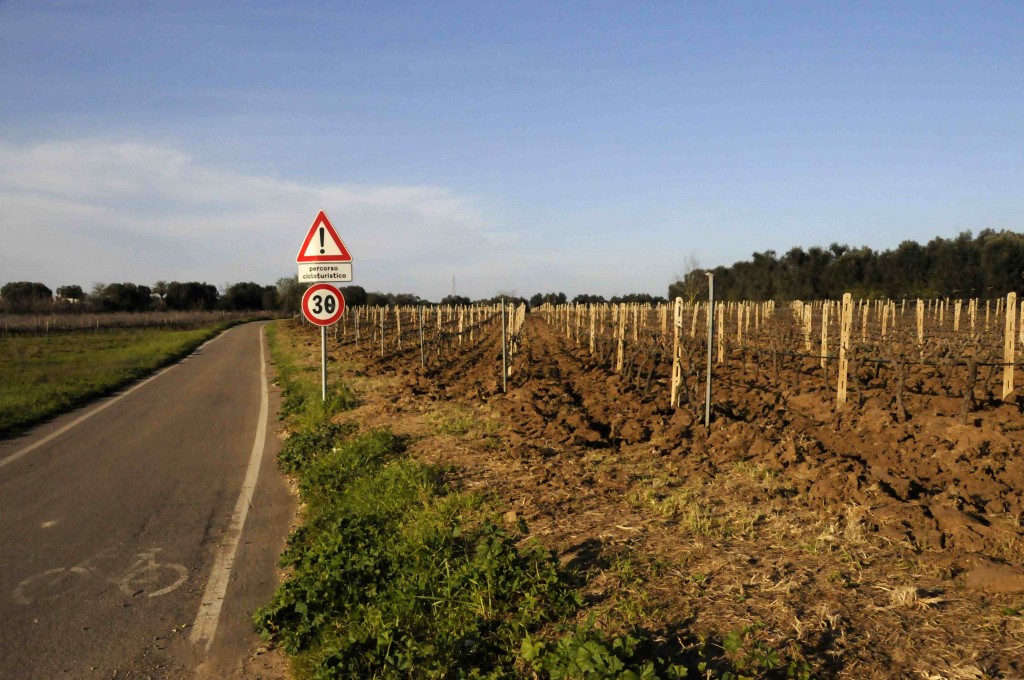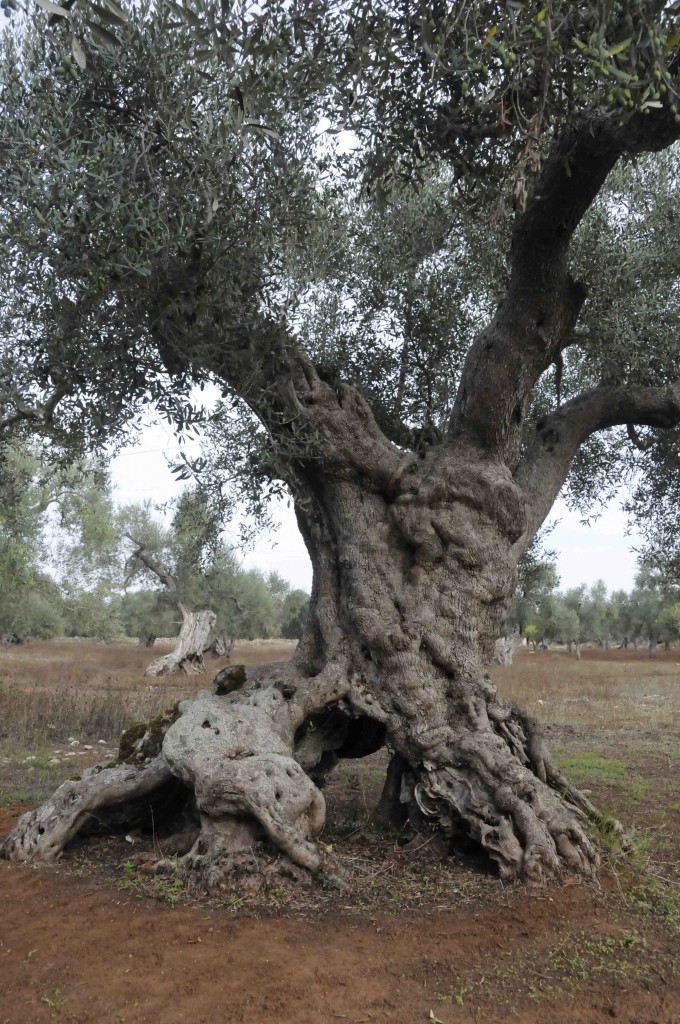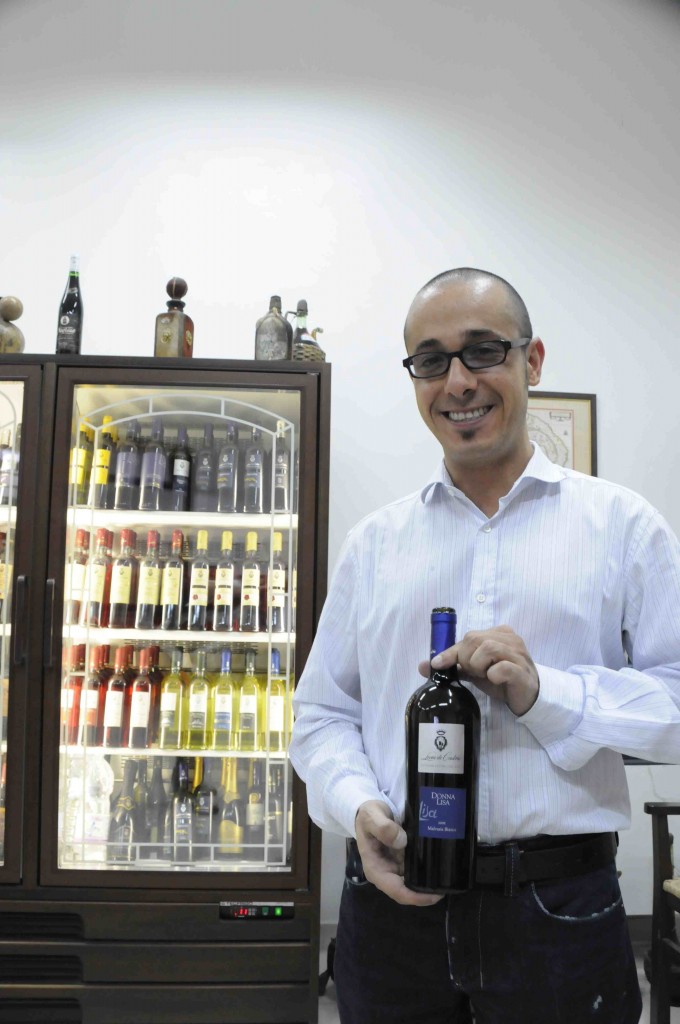 This morning, we woke up and said goodbye to the city of Lecce. We have two bicycles, only one of which has gears (profuse apologies to my girlfriend. Kristen). We’ve given our backpacks to a friend who we will meet up with in the city of Mesagne. Fortunately, bicycling in the south of Puglia isn’t very challenging because the terrain is mostly flat and there are many private bicycling paths. It is a favorite vacation spot for bicycling enthusiasts in Europe. Lecce’s tourist office didn’t have any trail maps, but I found good information through a Google search.
This morning, we woke up and said goodbye to the city of Lecce. We have two bicycles, only one of which has gears (profuse apologies to my girlfriend. Kristen). We’ve given our backpacks to a friend who we will meet up with in the city of Mesagne. Fortunately, bicycling in the south of Puglia isn’t very challenging because the terrain is mostly flat and there are many private bicycling paths. It is a favorite vacation spot for bicycling enthusiasts in Europe. Lecce’s tourist office didn’t have any trail maps, but I found good information through a Google search.
The wind was blowing from the south, which is known as sirocco, and it was actually pretty cold. The nights are still chilly here in early May. Fortunately, the exercise and the sun warmed me, and once the sun was up, the day was full-blown hot. This is my favorite time of year to be in Puglia, when the sun and the wind are in balance.

The roads that I’ve taken are as small as bike paths. They are lined with stone walls that make it somewhat difficult to pass cars. When two cars meet, one has to pull into a driveway. The local drivers have given us the right of way whenever they’ve seen us. Not that they’ve always seen us. Near Salice Salentino, I had to cross a major intersection where cars whipped by at nail-biting speeds. For a moment it felt like bicycling on a major highway. There was nothing to do but wait until traffic cleared, then pedal hard.
 For most of the ride, the countryside has been full of grapevines, fig trees, pawpaw cactus, and 500-plus-year-old olive trees. The olive groves seem endless; Puglia produces nearly two-thirds of all the olive oil in Italy. The grapevines are mostly Primitivo, Negroamaro, and Malvasia Nera grapevines, and the city that I’m now in, Salice Salentino, is one of the most famous in Puglia for wine production. The Salice Salentino DOC (a government classification of wine) is made with 80% Negroamaro and 20% Malvasia Nera.
For most of the ride, the countryside has been full of grapevines, fig trees, pawpaw cactus, and 500-plus-year-old olive trees. The olive groves seem endless; Puglia produces nearly two-thirds of all the olive oil in Italy. The grapevines are mostly Primitivo, Negroamaro, and Malvasia Nera grapevines, and the city that I’m now in, Salice Salentino, is one of the most famous in Puglia for wine production. The Salice Salentino DOC (a government classification of wine) is made with 80% Negroamaro and 20% Malvasia Nera.
Upon entering the town of Salice Salentino, we parked our bikes in front of Leone de Castris winery, located on Via De Castris 56. This winery is noted for being the first in Italy to make rosé wine, and its story is fabulous. A United States general visited the winery toward the end of WWII and loved the rosé wine (rosé is called rosato in Italy). The winery didn’t have any glass bottles because of the war and couldn’t bottle it, so the general had his soldiers collect empty beer bottles around camp. The first bottling of Leone  de Castris’s Five Roses rosato came in beer bottles. Today, we tasted many of their wines and talked about the future of Puglia wine with Export Manager Salvatore Ria.
de Castris’s Five Roses rosato came in beer bottles. Today, we tasted many of their wines and talked about the future of Puglia wine with Export Manager Salvatore Ria.
Now I’m preparing for the rest of our cycling journey to the small town of Mesagne. A friend will pick us up there, and we’ll spend the night at her house in Ceglie Messapica, a small town full of the strange architectural creations known as trulli. We’ll be only a few miles from Alberobello.


Comments